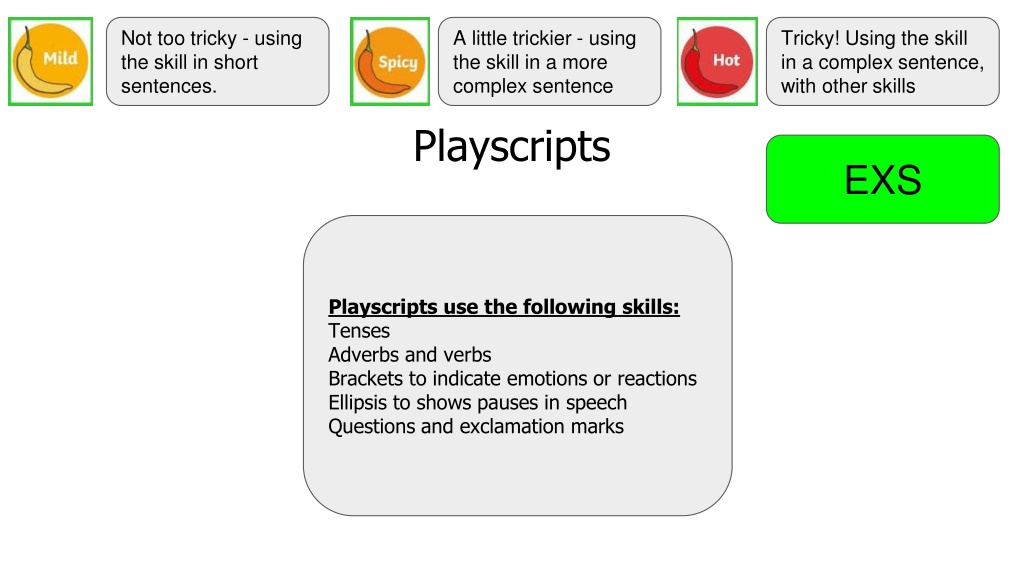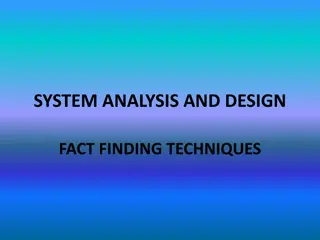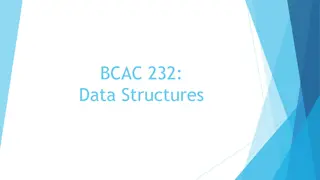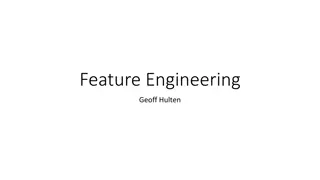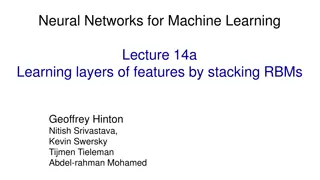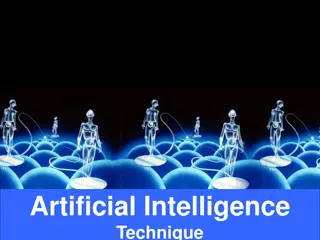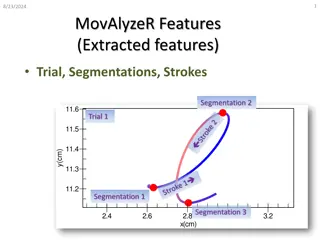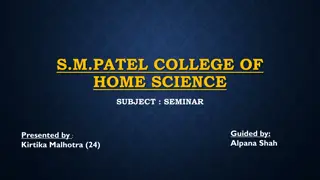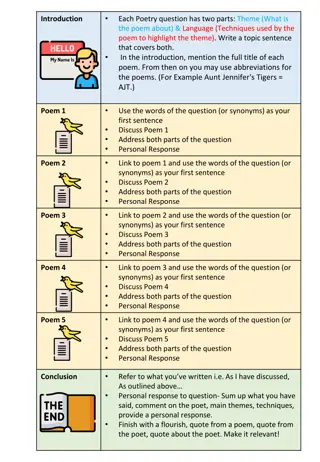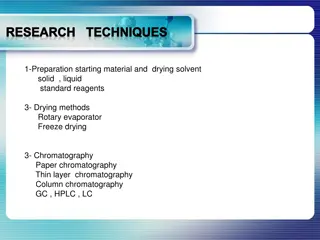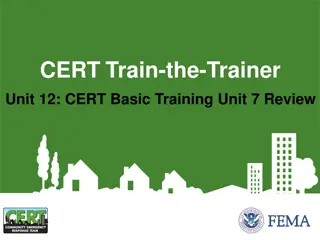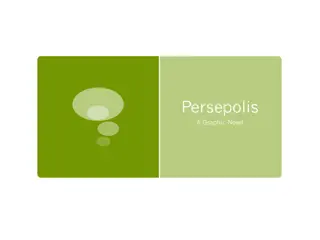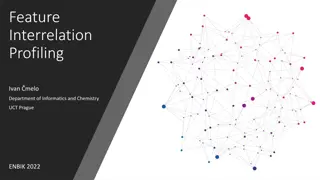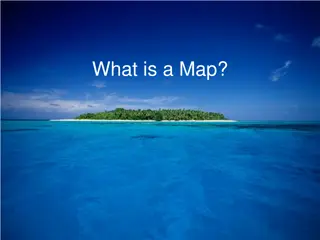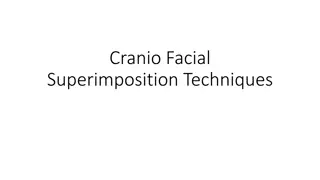Understanding Playscripts: Features and Techniques
Explore the key elements of playscripts including stage directions, speech, use of tenses, adverbs, and adjectives. Learn how to structure a playscript, differentiate characters through dialogue, and create vivid scenes using descriptive language.
Download Presentation

Please find below an Image/Link to download the presentation.
The content on the website is provided AS IS for your information and personal use only. It may not be sold, licensed, or shared on other websites without obtaining consent from the author. Download presentation by click this link. If you encounter any issues during the download, it is possible that the publisher has removed the file from their server.
E N D
Presentation Transcript
Not too tricky - using the skill in short sentences. A little trickier - using the skill in a more complex sentence Tricky! Using the skill in a complex sentence, with other skills Playscripts EXS Playscripts use the following skills: Tenses Adverbs and verbs Brackets to indicate emotions or reactions Ellipsis to shows pauses in speech Questions and exclamation marks
Features of a playscript Features of a playscript: - Stage directions - Speech - Characters names - List of props - Acts and scenes Click on the link and watch the following video to learn a little more about features of a playscript. https://www.bbc.co.uk/bitesize/topics/zsn4h39/articles/zx8kng8
Features of a playscript A narrator introducing the scene. Title of the play. Characters names, and then what they say, separated by a finger space or you can use a colon Stage directions: 1. To tell the actors what is going on in the scene. 2. To direct the actors around the stage, and to guide their reactions. Speech When a new character speaks you need to use a new line. Information in brackets to indicate emotions or reactions.
Tenses When writing a playscript, stage directions are all written in the present tense. This is because it is what or how you want the actor to do or say something now. Present tense words telling actor what to do now Examples Tom picks up a cup. However Mary: (leaning away from Tom) Don t just look at me...talk! When writing a playscript the speech does not have to be in present tense, you could talk about something that has already happened or something that is going to happen. Tom: (angrily) Why won t you listen to me! Mary: (snooty) I knew I was right. How the actor is to speak now Future Examples Tom: I m flying to Berlin tonight, can t this wait? Mary: Sue was here yesterday and told me everything. Past
Adjectives and adverbs Eg: Mary and Tom sit on the patterned cushion. Patterned is an adjective because it describes the cushion(noun). Tom: (angrily) I don t have time for this. Angrily is an adverb because it shows how Tom spoke. Adjectives, verbs and adverbs are mainly used for stage directions and setting the scene. Eg: Tom detestfully looks at Mary while pouring a cup of tea. Destestfully is an adverb because it shows how Tom looks(verb) at Mary Mary: (crosses legs and arrogantly speaks) I know what you ve done. Arrogantly describes the verbs speaks so therefore is an adverb. Let s look at some examples that could be used for this picture. Adjectives describe nouns( things, places or people) Eg: Tom stiffly walks into the room and slumps himself onto the patterned cushion, Mary follows and gracefully places herself beside him. Stiffly and gracefully are adverbs because they describe the verbs walks and places Mary: (bitterly spoken while elegantly leaning away from Tom) Well what do you have to say for yourself? Adverbs describe verbs(doing words) Adjectives: tense, disgusted, comfy, shouting, well lit, patterned. Adverbs: angrily, elegantly, bitterly, arrogantly, detestfully, gracefully, stiffly, sternly.
Prepositions Eg: Mary puts her cup on the tray. On is the preposition within this sentence because it tells us where Mary puts her cup. Prepositions are mainly used in a playscript to tell the actor where they, or an prop, should be. Eg: Tom slouches next to Mary and picks up a cup. Next and up are the prepositions within these sentences because they tell us where tom slouches and in which direction his cup moved. Examples of preposition words: -On -In -Next to Eg: Mary gracefully plants herself beside Tom and then carefully places the stripy cushion behind them. Beside and behind are the prepositions within these sentences because they tell us where Mary plants herself and where she placed the cushion. -Behind -Under -Beside
Questions and exclamation marks Eg: Mary: Yes, I got in! Eg: Tom: What does the letter say? An exclamation mark is used to show that Mary is surprised. A question mark is used to show Tom s interest in Mary s letter. . Question marks are used to ask questions Eg:Mary: (Jumping in the air) Yes,I got in! Eg: Tom: (Turns around to Mary) What university is it from? An exclamation mark is used to show that Mary is surprised. A question mark is used to show Tom s interest in Mary s letter. E.g: Mary: Where are you going ? Exclamation marks are used to show something surprising or forceful. Eg:Mary: (Jumping in the air) Yes...I got in! Eg: Tom: (Turns around to Mary) Wait What university is it from? An exclamation mark is used to show that Mary is surprised. A question mark is used to show Tom s interest in Mary s letter. E.g: Tom: Wow!
Brackets Eg: Mary: (Angrily) Why did you do that? Brackets used to indicate that Mary has spoken angrily. Brackets for an actor s direction When you want an actor to do something or say something in a certain way you use brackets to tell them how or what to do. Eg:Tom: (Dropping the plates on the ground) Sometimes the world is just annoying. Brackets are used to indicate the action of Tom dropping plates onto the ground. Eg: Mary: (Grabbing the pieces of china off the floor) You need to learn ways to calm down and stop acting out. Brackets are used to indicate the action of Mary picking up pieces of china off the floor. Mr Jolie: (smirking) I have given you your homework
Ellipsis Eg: Mary: Ah... Why did you do that? Ellipsis has been used to show a pause within the speech Eg: Tom: (Holding his arms in the air)Because . I wanted to see if the ball would touch the ceiling . Ellipsis has been used to show a pause within his speech. Ellipsis are used in play scripts to indicate a dramatic pauses within speech. E.G: Kadeem : Wait I see something. eg: Mary:(Rolling her eyes ) I did...didn...didn t find it funny. Ellipsis have been used here to show the character stuttering.
Planning your play script Mind map - Playscripts ALL Use the first section of the planning document, to make notes on your characters, plot and setting. https://docs.google.com/document/d/1LF Mree1eSvwR5AW_pUXsJzFejmodOwZ 3tkqUkNP2u_E/edit
Setting the scene Setting the scene - EXS/GDS Use the next sections of the planning document, to make notes on setting the scene https://docs.google.com/document/d/1LF Mree1eSvwR5AW_pUXsJzFejmodOwZ 3tkqUkNP2u_E/edit
How characters interact/stage directions Ian: (sighing) Oh ok I will get it. We ought to give them a key. They are our children! Characters - EXS/GDS Helen laughs to herself as Ian exits. Seconds later, he re-enters with two adult men behind him. One is skinny, over 6ft and with light brown hair. The other, although shorter, is still tall with much darker hair than his brother. Helen: (jumping up) Boys! So lovely to see you. (She hugs the boys in turn, smiling). How was the journey? Alex: Easy. Only took about an hour and a half. Surprisingly little traffic for this time of year. Suddenly a noise is heard. The whole family appears to hear it but the noise is so strange none of them really know how to react. After a brief pause, they return to their conversation. Helen: So Paul how is the new job? Paul: It s alright. Still have a lot to learn but the team is great so I m pretty lucky. So much better than the other place.
Sometimes you will need to use parenthesis (brackets) to show a character does more than one action when they are speaking. Ian: (cheering) You got that right! The use of ellipses (...) tells us that the character is interrupted or stops talking. This creates suspense. Alex: I have a mate who worked at the same company and he said... Alex stops as the noise has returned. This time louder. This time they can t ignore it and look concerned at one another. Alex: (getting up) What is that? (he starts to walk round the room, bent over, searching). As Alex continues his hunt, a small, furry creature emerges from the shadows. Although small, its teeth are almost half the length of its entire body. This creature could cause some problems. The creature looks at the family. The use of ellipses (...) here creates suspense. It makes the reader want to know more, or feel intrigued. The description in the stage directions is important, it indicates that the creature is scary, so that the director knows how to make the creature look. They scream and attempt to exit. Finding the exits locked, the screaming gets louder. The Creature: (looking up at them) I am not here to hurt you. I have to tell you something Blackout
Planning Document https://docs.google.com/document/d/1LFMree1eSvwR5AW_pUXsJzFejmodOwZ3tkqUkNP2u_E/edit Complete the planning document above (remember to make a copy before editing). Once you have completed the planning, write a short scene between your characters. Your characters have found a mysterious creature/animal in the house.
